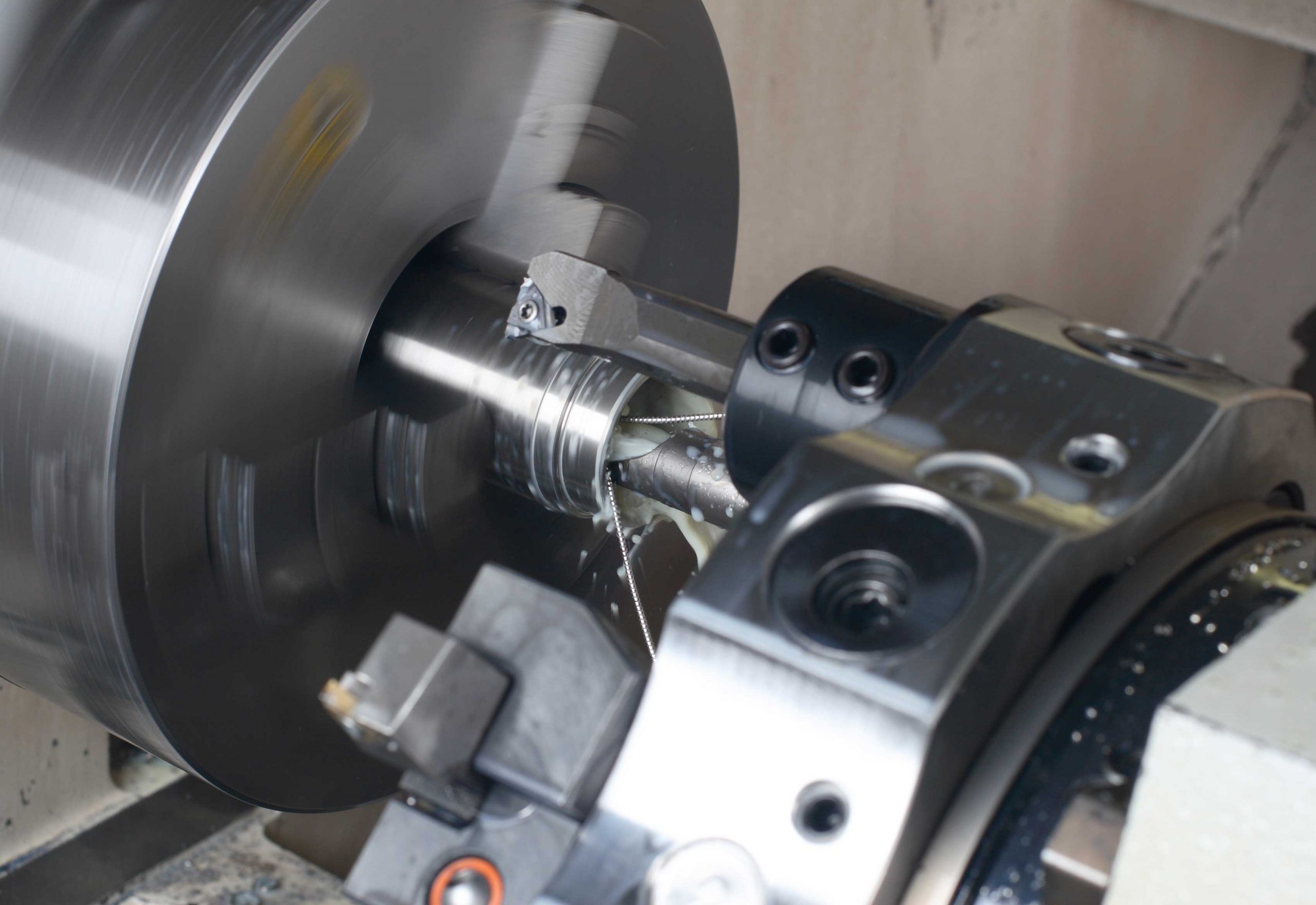Best Practices for Machine Shops
 Machine shops have numerous metal fabrication operations including parts cleaning, welding, assembly, laser cutting, and of course all manner of machining processes – milling, turning, drilling, grinding, and more. There are a number of focus areas that machine shops can look into for optimization and waste reduction to achieve cost savings. This page contains discussion on metalworking fluid management and water quality, as well as several case study examples of successful process improvement projects implemented by metal fabricators.
Machine shops have numerous metal fabrication operations including parts cleaning, welding, assembly, laser cutting, and of course all manner of machining processes – milling, turning, drilling, grinding, and more. There are a number of focus areas that machine shops can look into for optimization and waste reduction to achieve cost savings. This page contains discussion on metalworking fluid management and water quality, as well as several case study examples of successful process improvement projects implemented by metal fabricators.
Cutting Fluid Management
Cutting fluids are a key component for successful machining operations. They have a critical impact on the surface finish and tolerances of the work piece. They also extend the life of the cutting tool while improving the speed of the operation. Proper selection and management of cutting fluids is therefore a high priority for machine shops.
Extending cutting fluid life is one way to maximize productivity while minimizing purchasing and disposal costs. Consider using the following best management practices to optimize coolant use:
- Checking and adjusting machine coolant volume and concentration regularly
- Maintaining clean sumps
- Using appropriately purified water for dilution (softened, RO, or DI)
- Draining and returning coolant from metal chips
- Filtering drained coolant
- Utilizing a chip centrifuge or compacter for enhanced coolant recovery
- Implementing a centralized recycling system
While a centralized recycling system can offer significant cost savings and coolant waste reduction, there are a number of challenges to consider as well. Some of these includes:
- Ensuring that the coolant is bio-stable
- Replenishing any required additives in the fluid
- Testing to ensure recycled fluid provides satisfactory performance and finish quality
- Communicating new changes and procedures with machine operators.
See MnTAP’s webpage Coolant Management for more information.
Water Quality and Treatment
Water is the major component of any water-soluble metalworking fluid. Therefore, having the right water quality is essential for optimal coolant performance and longevity. Treating water prior to use in coolant formulation is a common practice among many shops. However, revisiting this process could yield potential improvements in coolant quality, process efficiency, and resource conservation. Sampling incoming water is recommended to assess what type and level of treatment to use.
Hardness
Hardness is one of the most important parameters when considering water quality’s impact on metalworking fluid performance. Hardness is a measure of the concentration of dissolved minerals, usually expressed as parts per million (ppm) of calcium and magnesium ions. Typical recommended hardness ranges between 80 to 125 ppm.
Overly hard water (>200 ppm) causes the formation of insoluble soaps in some metalworking fluid mixes. These soaps appear as scum that deposits on surfaces of tanks, pipes, and machines. This happens due to ions reacting with the surfactant in the fluid. Soluble oils and semi-synthetics are the most adversely impacted by hard water. Topping off coolant or other recycling initiatives should be done with softened water; otherwise the hardness in the fluid will rapidly rise as water evaporates, reducing its usable lifespan.
Overly soft water (<50 ppm) is also undesirable as it may cause foaming of the fluid as it is cycled and applied. Foam causes numerous problems including overflowing sumps, decreased cooling and lubricating, reduced corrosion protection, ineffective fines settling, and interference with tramp oil skimmers. Ultimately, this leads to reduced machining performance and product finish quality as well as increased downtime and maintenance.
Water Softener Optimization
Water softening is a common treatment method to remove calcium and magnesium ions from the incoming water supply. There are several best management practices that can be utilized to optimize water softeners and reduce chloride use. Using an accurate hardness setting and lowering the salt dosage are two no-cost adjustments that can be programmed into the water softener’s operational settings to achieve instant water and salt usage reductions. Replacing the resin bed and conducting an elution study are two additional steps that can be made to further optimize your water softener’s performance. Consult with your water softener servicer to see if these options are recommended.
Resources
Projects
- P2 in Precision Manufacturing & Metal Fabrication (2020). This three year project is focused on identifying pollution prevention opportunities for machine shops, sharing options with industry stakeholders, and providing technical assistance to businesses.
- Industry Survey Results Summary (2022): This document reviews the findings
from an assessment of companies in the metal fabrication sector conducted in
2021-2022. A total of 14 respondents participated in the assessment, which
consisted of a questionnaire and follow up interview. Common best practices,
opportunities for pollution prevention, and challenges to implement projects are
identified and discussed.
Case Studies
- Coolant Recycling: Lou-Rich designed and implemented a centralized coolant recycling system to significantly reduce overall coolant usage and disposal costs.
- Process Efficiency: Metal Services fabricated in-house carts and utilized facility and process mapping strategies to significantly reduce forklift usage and production lead times.
- Energy Efficiency: Jones Metal purchased a fiber laser cutter, achieving energy savings and improved throughput compared to conventional CO2 lasers.
Publications
- Cutting Oil Recycling (p. 18): Roberts Automatic Products generously shared their impressive oil recycling system with MnTAP. This program allows them to reduce cutting and lubricating oil disposed as waste by 80% (8,000 gallons per year) and save $160,000 annually, while improving product finish quality.
For more information, contact:
Daniel Chang
Associate Engineer
612-624-0808
dwchang@umn.edu